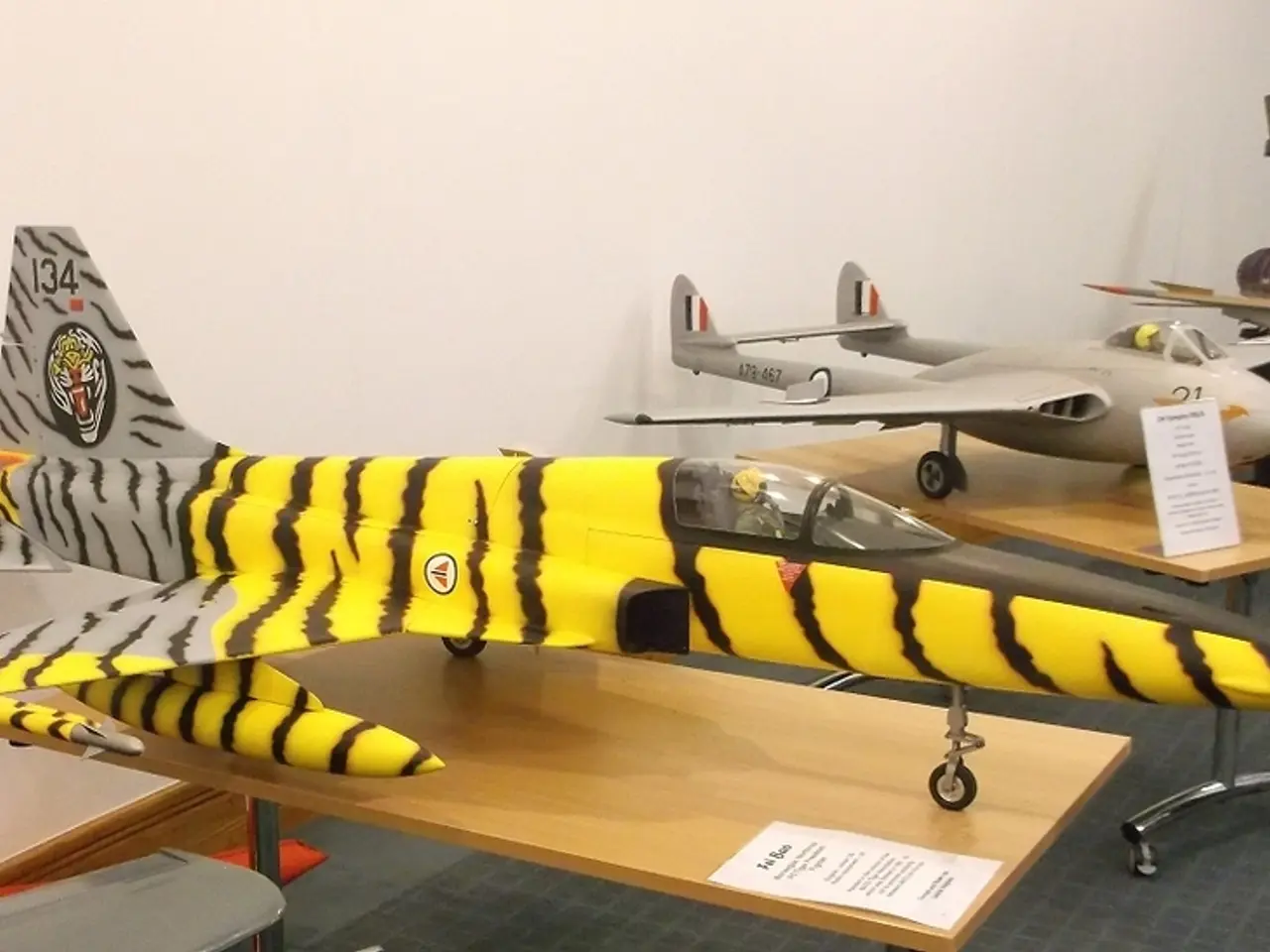Transformation of Economy Class - Significant Alterations over the Last Ten Years
In the skies of 2025, air travel is undergoing a significant transformation as airlines strive to offer more comfort, privacy, and technology to passengers. The focus on passenger comfort, efficiency, and adapting to new aircraft technologies is more evident than ever.
### Seating Options & Cabin Layouts
The adoption of lie-flat seats on narrowbody aircraft, such as the A320-family, has seen a significant increase, tripling over the past decade. Major airlines like Eurowings, Aegean Airlines, Riyadh Air, China Southern Airlines, Thai Airways, and Kuwait Airways have announced or introduced A321neos with lie-flat seats from leading manufacturers.
Privacy and layout innovations are also at the forefront, with ANA introducing "The Room FX," a new business class suite on their 787-9 aircraft. Featuring full-height privacy doors, a 1-2-1 layout alternating forward- and rear-facing seats, larger high-resolution monitors, wireless charging, Bluetooth headphone support, and expanded storage, this seat offers a level of comfort and privacy unparalleled in the industry.
While premium cabins are evolving with enhanced comfort, many airlines are focusing on smarter design to fit more seats in the same cabin footprint to preserve revenue. Airlines like Air New Zealand are increasing premium seating capacity on long-haul routes, especially to North America and Asia, with refreshed cabins on retrofitted 787-9 Dreamliners.
### Technological Innovations
Advanced materials and lightweight seating are key trends in 2025. RECARO has unveiled a new lightweight seat designed for electric Vertical Take-Off and Landing (eVTOL) aircraft, developed with Eve Air Mobility. These seats use high-grade aluminum, titanium, and composites to improve energy efficiency and adapt to unconventional cabin layouts demanded by urban air mobility.
New business class seats feature wireless charging pads, multiple USB-C ports, Bluetooth connectivity, and larger in-seat entertainment displays, reflecting a trend toward integrating personal electronic convenience and entertainment. To improve reliability and reduce mechanical complexity, some seats, like ANA’s “The Room FX,” use a "no-recline" forward-slide design for bed mode, rather than traditional backward tilting.
### Summary
In conclusion, 2025 sees an accelerating shift toward more comfortable, private, and technologically advanced premium cabins, alongside innovation in lightweight seating for emerging urban air mobility markets. Airlines balance these enhancements with operational efficiency, maximizing seat density where possible while responding to rising premium demand.
Real-time updates on meal availability during the flight further improve transparency and customer satisfaction. Airlines have responded to this demand by introducing wider seats and improved legroom, often reaching 32 inches of pitch in some fleets. Airlines are investing in personalized services, leading to a 12% rise in ancillary revenue.
Airlines now offer multiple dietary accommodations, catering to gluten-free, vegan, and low-calorie preferences. Automation in customer service is on the rise, with around 50% of inquiries now handled by chatbots. Airlines are increasingly offering charging ports for personal devices, reflecting a critical demand from travelers.
In 2025, over 67% of passengers prioritize increased comfort when choosing airlines. Airlines are now focusing on incorporating 'anti-microbial' materials in seating, which can reduce germ transmission by more than 90%. Pre-order systems enable travelers to select meals ahead of time, resulting in a 30% reduction in food waste.
Nearly 80% of carriers now cater to dietary restrictions, reflecting the diverse preferences of modern travelers. 62% of travelers consider Wi-Fi availability a major factor in their airline choice. Innovative offerings, including in-flight snacks, are becoming commonplace.
Airlines have adopted dynamic pricing models, with 45% utilizing algorithms to adjust fares based on demand and competition. Airlines have introduced diverse meal choices and flexible ordering methods. Data analytics allows airlines to tailor offerings based on passenger preferences.
Over 95% of airlines globally had begun offering charging ports for personal devices by 2025. Over 75% of aircraft now feature seatback screens or streaming services accessible from personal devices. The future of air travel is undeniably comfortable, technologically advanced, and tailored to the needs of modern passengers.
In the evolving landscape of air travel, passengers can expect an enhanced lifestyle with innovative seating options and cabin layouts. The adoption of lie-flat seats and privacy-focused designs, such as ANA's "The Room FX," offers unparalleled comfort and privacy, while there's a growing trend towards integrating personal electronic convenience and entertainment features. On the other hand, technological advancements like lightweight seats for eVTOL aircraft and wireless charging pads in new business class seats are set to revolutionize travel. This blend of comfort, privacy, and technology is reflective of the travel sector's commitment to enriching the overall air travel experience for modern passengers.




